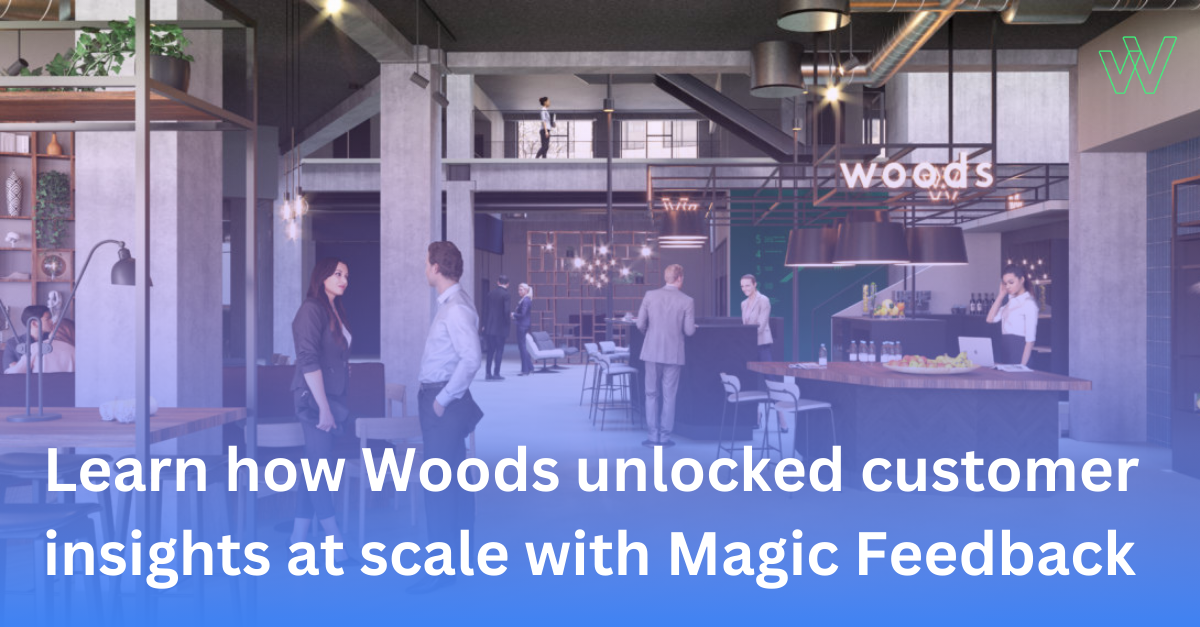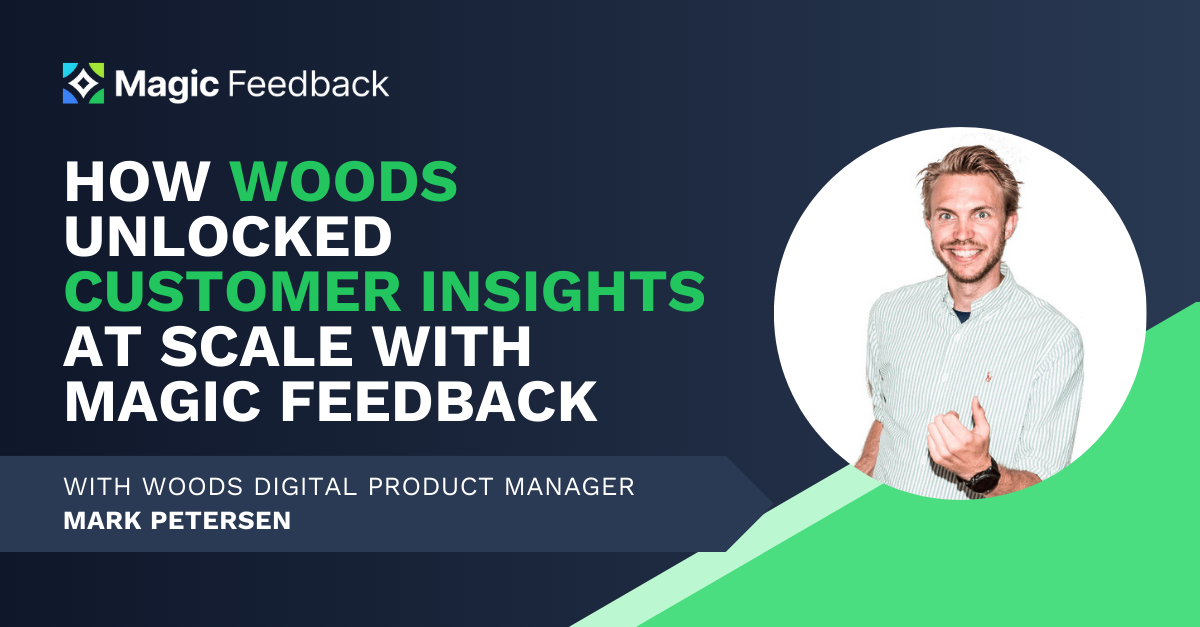A successful discovery interview can lead to pivotal, unique insights about your ideal customer profile, their business problems, and priorities. In many cases, these interviews can make or break a successful launch of a product or improvement to an existing one. In this guide, I will go through how to be successful in discovery interviews by asking the right customer interview questions.
Preparation for discovery interview
This goes without saying: you should never enter a discovery meeting unprepared. Take the time to educate yourself about the person you are going to speak with. Research their professional career, job role, and background, so that you join the call with a decent understanding of the individual. If you are using Magic Feedback, you can simply go to Magic Profiles and look up any customer and read all the feedback that they have given you historically across all channels.
For instance, if the person you are interviewing has recently started a new job, it’s important to show empathy and consider that when formulating your questions. Look for opportunities rather than limitations. A person who is new to their role may be more willing to share challenges because they are still adapting to their routines. Ensure that you make use of your understanding of the person you are interviewing. If you’re using Magic Profiles, you can view all the feedback that they have given historically across all channels. Make sure you don’t overlook any significant feedback they’ve given you or one of your other customer-facing teams recently.
How to conduct the discovery customer interview
Start by expressing gratitude and thanking the customer for taking the time to speak with you. Sincerely convey your appreciation for their willingness to engage in the conversation despite their busy schedule. Introduce yourself in a personable manner to establish a connection and create a sense of psychological safety. After the introductions, share the agenda for the interview. I recommend framing it as an informal discussion where you go with the flow. This informality helps create a relaxed atmosphere. Consider yourself as a researcher or journalist who is genuinely curious about exploring a specific problem. Remember, the objective of this meeting is to validate your idea, so resist the urge to sell your solution, regardless of how tempting it may be during the conversation.
For instance, most discovery customer interviews typically last around 30 minutes. Allocate the first 5 minutes for introductions to establish rapport with the person. Then, dedicate 5 minutes to set the context and agenda for the interview. Be mindful of time management throughout the conversation. Always leave around 5 minutes at the end to express gratitude for the interview and inquire about the possibility of following up with a potential solution to their problem.
Validation of problem statement
First and foremost, you need to come up with one or two questions that can validate your problem statement with a simple yes or no. It’s important to ask these questions at the beginning of the interview to determine if you are indeed speaking with your ideal customer profile (ICP). By ensuring that you are engaging with your ICP during the discovery process, you can avoid collecting feedback that might lead you in the wrong direction. Sometimes, you may discover that the customer does not fit your ICP. In such cases, you can ask them about their top three priorities and explore if there’s something interesting beyond your ICP. However, as a general rule, to respect everyone’s time, you should consider politely ending the meeting early if the customer does not fall within your ICP.
For example, let’s say if your product is an app to remind remote workers to take breaks and engage in exercises to improve their health. Some examples of questions that can validate your problem statement could be: Have you experienced any health problems since transitioning to remote work, such as back pain, neck pain, or poor circulation? Do you ever forget to take breaks or move around during your workday?
Discovery customer interview questions
Once you have validated that you are speaking with your ideal customer profile (ICP), your next step is to ask a series of discovery questions to gain a better understanding of their problem, priorities, and how they are currently attempting to solve it. It is advisable to avoid asking “would you” questions, closed questions, leading questions, or asking directly what people want. Instead, focus on asking questions that help you comprehend the customer’s experiences and how the problem impacts their daily life.
For example, if we continue with the example of building an app for remote workers to incorporate exercise and improve their health, you could ask questions such as: Can you describe a typical workday for you as a remote worker? How significant is physical activity and movement for you during your workday? How do you remind yourself to take breaks or include physical activity in your workday?
Follow up questions
Once you begin asking the customer the prepared discovery questions, it’s important to practise and skillfully ask follow-up questions. More often than not, it is these follow-up questions that provide unique insights, helping you validate your idea. Consider the initial discovery questions as a means to encourage the person to open up broadly about the problem, while the follow-up questions enable you to laser-focus on validating specific aspects of the problem that your idea aims to address.
For example, during a discovery customer interview, you might ask the customer to describe a typical day as a remote worker. If the customer briefly mentions going for a quick walk after lunch, as you are building an app to remind remote workers to exercise for health purposes, this presents an opportunity to ask a series of follow-up questions. You can inquire about what motivates them to take their daily walks after lunch and how they remind themselves to do it. Depending on their answers, you can further explore with additional relevant follow-up questions to gain deeper insights. Train yourself to use “what,” “how,” and “why” questions to elicit responses from the customer that offer richer details compared to closed questions.
Write down rich notes
During the discovery interview, your ideal customer profile will describe their problem in their own words. They will provide real examples and offer detailed descriptions of the associated emotions. Essentially, they are presenting you with the customer’s voice on a silver platter. It is crucial to take detailed notes and use the exact words they share with you. This approach not only helps validate your idea but also enables you to refine your value proposition and craft effective communication for your website, outreach efforts, and other platforms.
For instance, ensure that you capture comprehensive notes during every discovery interview. Avoid attempting to summarize or generalize the information being shared. Instead, write down everything interesting and use the interviewee’s exact words. After conducting 20-30 discovery customer interviews, you can begin comparing all your notes to identify patterns and insights across them. If you are unsure how to proceed, you can use tools like Magic Feedback to automatically analyze and organize all your discovery interview notes within seconds.
How to end the discovery interview
As you approach the last 5 minutes of the discovery interview, you should have validated whether the customer has the problem you are trying to solve and gained a good understanding of its priority for them. If you have successfully validated the problem and it is a high priority for them, it’s time to sell them on the idea of a follow-up meeting without directly selling your solution. Additionally, always express gratitude and thank the participants for their time. It’s truly remarkable that individuals take time out of their busy schedules to meet with founders like yourself, so it’s essential to be mindful and respectful of that. ´
For example, when selling an app aimed at reminding remote workers to move and exercise for improved health, you can mention that you are actively working on a solution and provide a brief high-level description of it. Express that you would love to get their feedback on the solution once it’s ready. However, refrain from selling the product or delving into extensive product details. Keep the approach high-level and avoid sounding overly salesy. If you have built a trusting relationship and successfully validated the problem and its priority, most interviewees are likely to agree to provide feedback on your solutions. Instead of selling the product itself, consider it as selling the commitment to participate in a meeting to offer feedback on your product when it’s ready. Take it one step at a time and avoid rushing the process.


